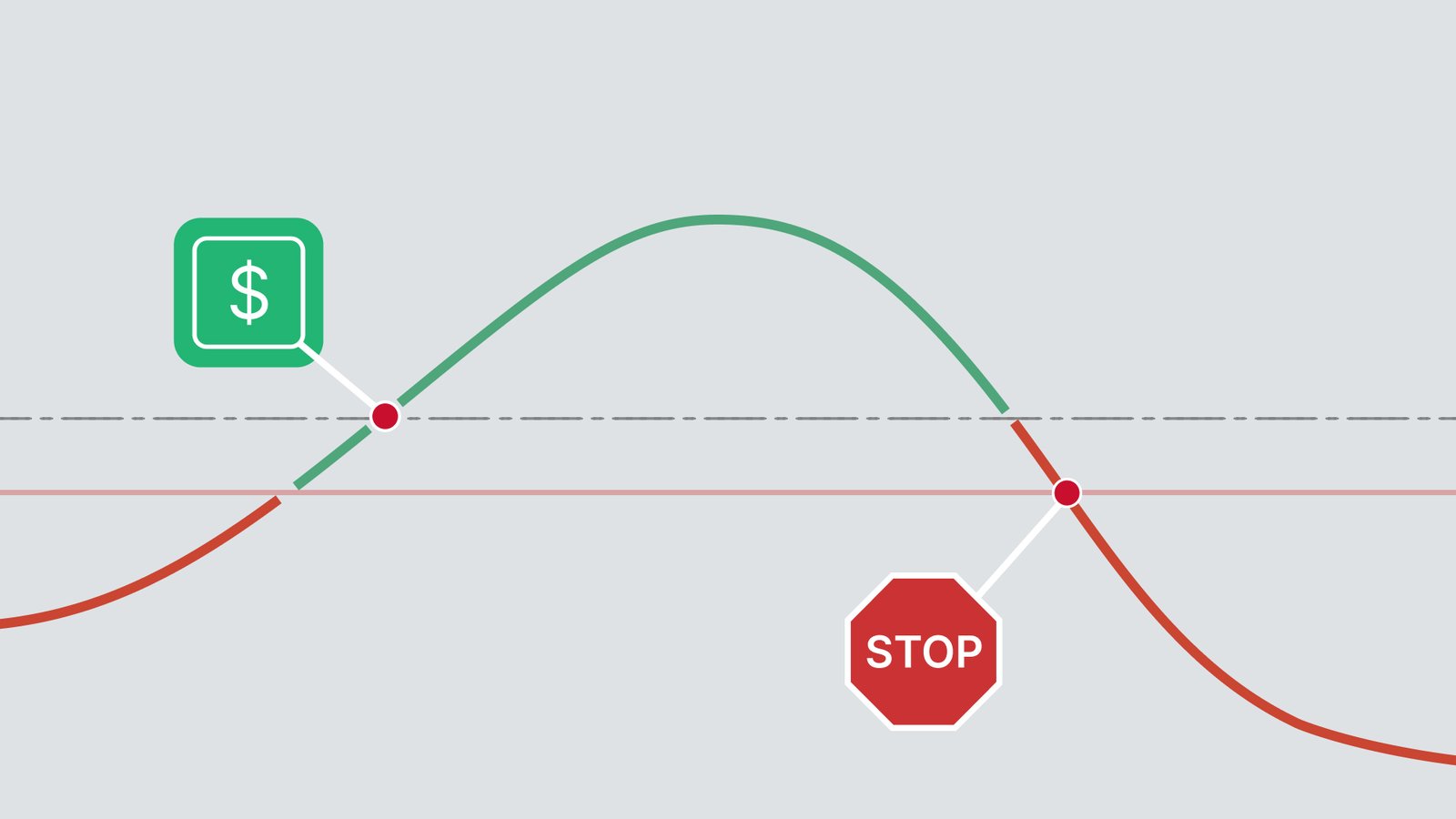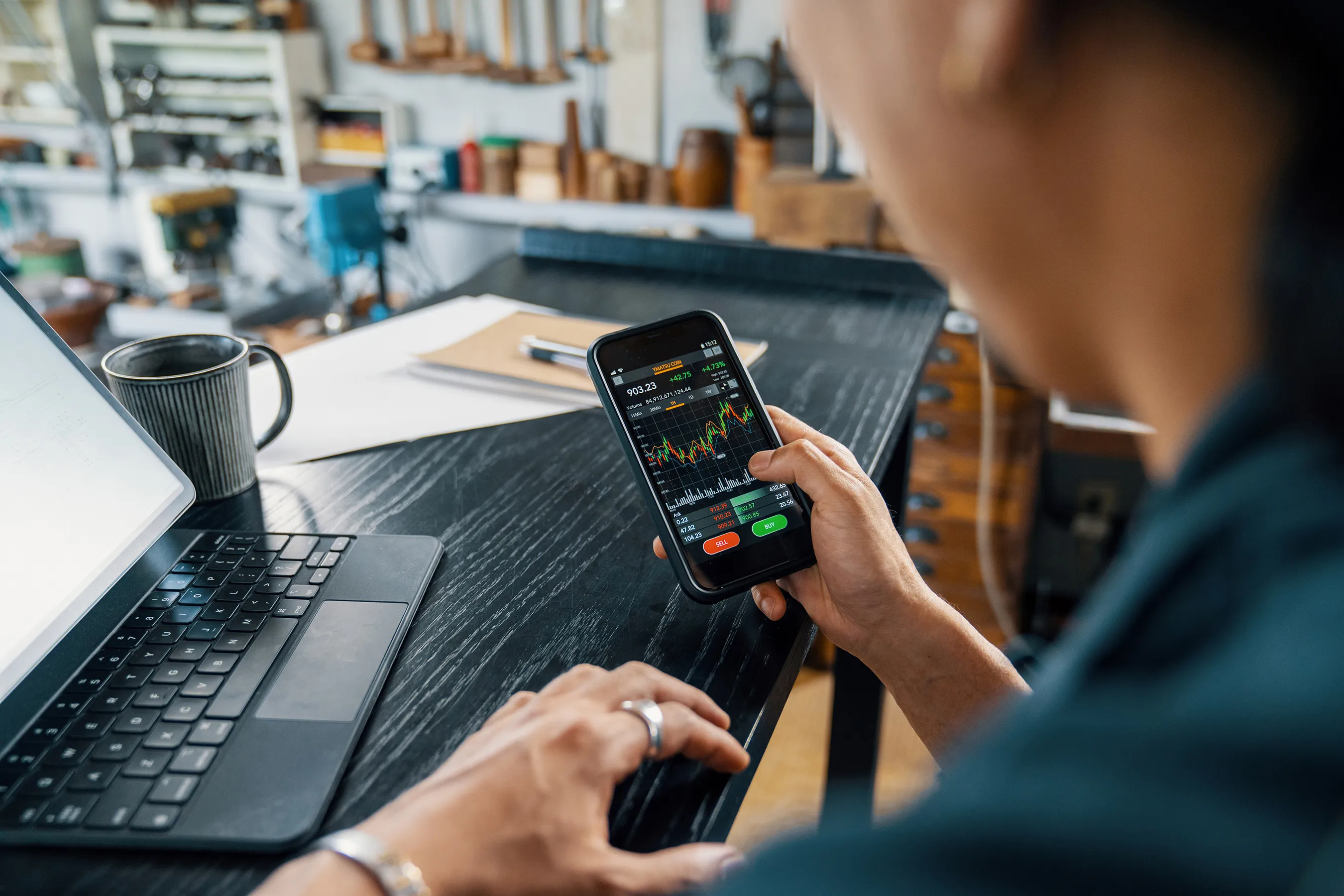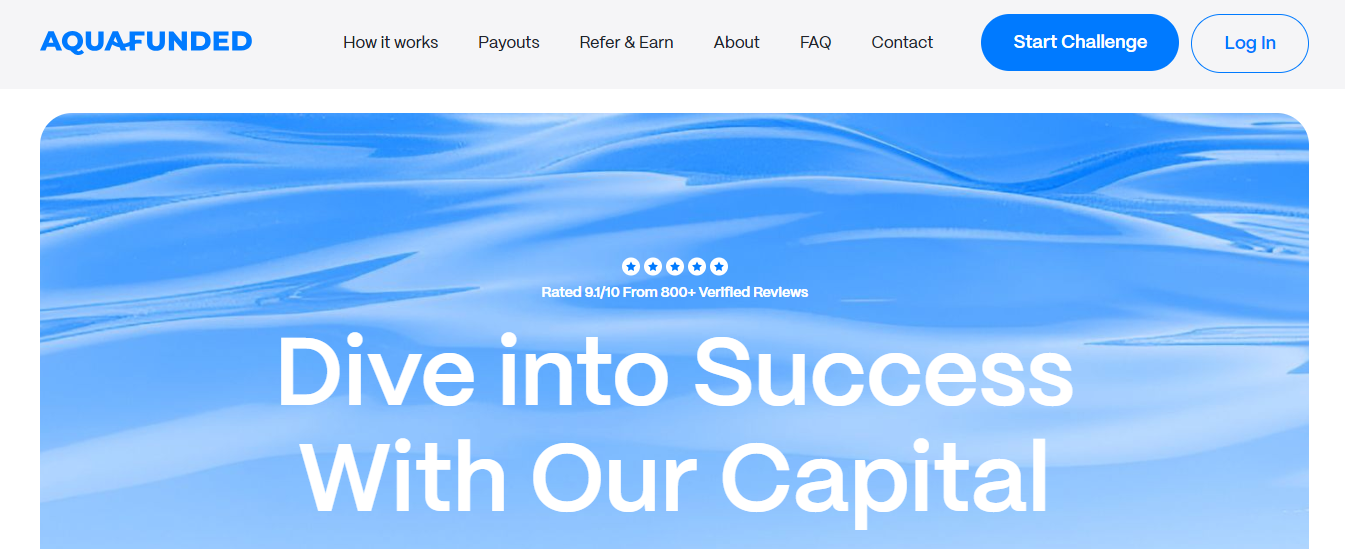12 Best Forex Risk Management Tools
Discover the 12 best Forex risk management tools to protect your trades, reduce losses, and improve your trading strategy.

Navigating the world of Forex trading can feel like trying to solve a complex puzzle. You’ve got your strategy, your indicators, and your charts all lined up. But what about managing risk? That’s a whole other ballgame. Learning how to protect your capital while maximizing your trading potential is key, and that's where Forex risk management tools come in. Whether you’re figuring out where to learn trading or looking to refine your approach, understanding these tools can make all the difference.
If you're serious about leveling up your trading game, AquaFunded’s funded trading program is designed to help you maximize your trading potential with capital.
Is Forex Trading Easy for Beginners

Forex trading might seem appealing for newcomers, but it’s no walk in the park. Sure, opening an account is quick, and you can ease into trading with small amounts or practice on demo platforms. Yet, the steep learning curve can be daunting. You’ll encounter multiple challenges along the way:
1. Complex Market Dynamics: A Tough Nut to Crack
The forex market isn't just about buying and selling currencies. Prices shift based on economic data, interest rates, geopolitical events, and market sentiment. Understanding these factors takes time and effort. As a beginner, you might find yourself chasing trends without knowing why the market is moving the way it is.
2. High Volatility: Brace for Impact
Forex trading is fast-paced and highly volatile. Prices can change in the blink of an eye, wiping out positions before you even have time to react. It’s a rollercoaster ride that can be thrilling but also terrifying for new traders. The market demands quick thinking and the ability to stay calm under pressure.
3. Leverage Risk: Double-Edged Sword
Leverage can be a powerful tool, allowing you to control larger positions with less capital. However, it also magnifies losses just as much as profits. As a beginner, it’s easy to get caught up in the excitement and take on too much risk. Without proper risk management, you could find yourself in a financial hole before you know it.
4. Emotional Discipline: Keeping Your Cool
Trading can be an emotional rollercoaster, and many new traders struggle with fear, greed, and overtrading. These emotions can lead to impulsive and costly decisions. It’s crucial to develop emotional discipline and stick to your trading plan, even when the market is moving against you.
5. Skill Development: Mastering the Basics
Success in forex trading requires mastering both technical and fundamental analysis. You’ll need to read charts, understand indicators, and stay on top of economic news and macro trends. Consistent risk management is also essential. It’s a lot to learn, and it takes time to build the necessary skills.
Forex trading is possible for beginners, but it’s not easy. You’ll need patience, practice, and a willingness to learn from your mistakes. If you’re not prepared, the likelihood of losing money early on is high.
Importance of Risk Management in Forex Trading

Guarding Your Capital
The forex market can be unpredictable. Risk management acts as a safeguard, preventing significant losses and preserving your trading capital. This means setting stop-loss orders and determining how much of your account you're willing to risk on a single trade. Protect your capital to trade another day.
Keeping Emotions Under Control
Trading can be emotional. Defined risk management rules help you avoid impulsive decisions driven by emotions like fear or greed. It’s about sticking to the plan rather than reacting to every market move. When you control your feelings, you make better decisions.
Surviving for the Long Haul
Even the best strategies face challenging times. Risk management ensures that you can weather these periods. By managing risk, you're not just aiming for short-term gains but also ensuring your survival in the long run. This means you can keep trading and improving.
Limiting Drawdown Damage
Drawdowns happen. But with proper risk management, you can minimize their impact. By setting limits on how much you lose on a trade, you maintain your equity and reduce the time it takes to recover from losses. This keeps your account healthy and ready for the next opportunity.
Achieving Consistent Results
Consistency is key in trading. Traders with solid risk management strategies stick to their game plan. This leads to more predictable and reliable results over time. You’re not just chasing profits but building a stable trading career.
Looking to turn your trading skills into substantial profits without risking your capital? AquaFunded’s funded trading program gives you access to accounts up to $400K with flexible conditions, no time limits, easy profit targets, and up to 100% profit split. Join over 42,000 traders worldwide who’ve already collected more than $2.9 million in rewards, all backed by our 48-hour payment guarantee.
Related Reading
- How Long Does It Take To Learn Day Trading
- How Long Does It Take To Learn Forex Trading
- How Do You Backtest A Trading Strategy
- Which Trade Is Best For Beginners
- Do You Pay Tax On Forex Trading
- How Many Day Traders Are Successful
- How Much To Start Day Trading
- How To Start Trading As A Student
- Forex Trading Psychology
- How To Do Trading Business
12 Best Forex Risk Management Tools

1. Maximize Your Trading Skills with AquaFunded
Turn your trading prowess into substantial profits without putting your capital at risk. AquaFunded offers you access to accounts up to $400K with the most trader-friendly conditions available, no time limits, easy-to-meet profit targets, and up to 100% profit split. Join over 42,000 traders worldwide who've already raked in more than $2.9 million in rewards, all backed by our 48-hour payment guarantee. Start trading today with instant funding options or prove your skills through our customizable challenge paths, keeping up to 100% of what you earn.
2. Protect Your Capital with Stop-Loss Orders
A stop-loss order is essential for safeguarding your account by automatically closing a trade at a predetermined price. This tool prevents emotional decision-making and protects your capital from further losses. Use it alongside support and resistance levels, based on past prices and current market trends. Set a stop-loss on every trade, even when you're confident in the market direction.
3. Optimize Your Trades with a Strong Risk-Reward Ratio
In Forex, aim for a risk-reward ratio of at least 1:2, risking $1 to earn $2. This ensures that your winning trades outpace losses, maintaining long-term profitability even if your win percentage isn’t high. By sticking to this strategy, you ensure that your gains outweigh your setbacks, allowing your overall balance to grow.
4. Smart Position Sizing for Safer Trading
Effective risk management hinges on proper position sizing, determining how much to invest in each trade. Choose your position size based on your risk tolerance to protect your capital and limit potential losses. Balance risk and reward to ensure no single loss heavily impacts your account.
5. Diversify to Reduce Risks
Spread your investments across different currency pairs and strategies to lower the risk of a significant loss. By diversifying, you mitigate the impact of adverse moves in one currency pair, creating a more stable portfolio with reduced overall risk.
6. Leverage Wisely to Protect Your Account
High leverage can lead to quick, substantial losses. Keep your leverage low, ideally not exceeding 10:1, to shield your capital and minimize risk. Controlled leverage helps maintain your account balance, preventing losses that exceed what you can afford.
7. Develop a Solid Trading Plan
A clear trading plan is crucial for effective risk management. Base it on a sound strategy incorporating technical or fundamental analysis and tools like stop-loss orders and position sizing. A well-crafted plan keeps you disciplined and focused on long-term success, helping you make informed decisions even in unpredictable markets.
8. Stay Ahead with Economic Events and News
Economic reports, policies, and market sentiment can significantly influence market movements. Keep up with these events to anticipate shifts and adjust your strategy accordingly, avoiding unnecessary risks and seizing new opportunities.
9. Lock in Profits with Trailing Stops
A trailing stop is a dynamic stop-loss that moves with the market, securing profits as your trade progresses. It automatically adjusts, allowing you to maximize gains while reducing the risk of losing them. This strategy is ideal for experienced traders looking to protect their profits and capitalize on favorable trends.
10. Practice with Demo Accounts to Minimize Risk
If you're new to trading or struggling to make a profit, use a demo account to reduce risk. It allows you to practice without financial pressure, testing different strategies and tools. This builds confidence and hones your skills before trading with real money.
11. Regularly Review and Improve Your Strategy
The Forex market evolves, so continually refine your risk management strategies. Review past trades to identify mistakes and successes, adjusting your approach to stay prepared for unexpected market changes. By constantly refining your plan, you'll become more adaptable and successful over time.
12. Keep Your Emotions in Check
Emotions can lead to impulsive actions and unnecessary risks. Focus on managing your emotions by sticking to your strategy, setting limits, and taking breaks when needed. Avoid trades driven by fear or greed, staying disciplined and focused on long-term success.
5 Forex Risk Management Mistakes to Avoid

1. Overlooking Smaller Exposures
Neglecting the smaller parts of your company's balance sheet can lead to over-hedging. Often, businesses only hedge central units, leaving smaller ones exposed. This oversight can cause problems when you don’t have the whole picture. Imagine you hedge 10 million euros from your top subsidiaries, thinking you're covered. But if smaller units are collectively short by 3 million euros, you end up over-hedging. This not only wastes resources but could also breach your risk policies. It’s crucial to account for every part of your business, no matter how small.
2. Ignoring Shadow Balances
Shadow balances are hidden pitfalls that can mess with your hedging strategy. These occur when a transaction closes in a different currency than it started, leaving misleading entries. An all-too-common scenario is with VAT payables set in one currency but paid from an account in another. This mismatch can make a closed transaction appear open, leading you to hedge unnecessarily. Fixing shadow balances is essential to avoid false gains and losses and to prevent hedging something that’s already settled.
3. Incomplete Reconciliation
When balancing your forex risks, any leftover noise should be investigated. However, many only scratch the surface, finding a few oversized items and ignoring the rest. The minor issues you overlook today can become larger headaches tomorrow. It's wise to reconcile nearly all sources of foreign currency gains and losses regularly. This helps identify weaknesses in your hedge program and strengthens your accounting practices. Plus, it prevents unrelated expenses from being dumped into your FX Gain/Loss line. Automated tools can streamline this process, making it more efficient and less reliant on any one person.
4. Inefficient Hedge Rolling
Rolling hedges every month is a common mistake that benefits your counterparty more than it does you. Instead, align your hedges with your actual cash needs. For instance, if you expect to convert accounts receivable in 90 days, your hedge should at least match that timeline. There’s no point in hedging for one month and then rolling it over several times. When hedging revenue, align it to the cash collection date, not the revenue recognition month. This approach ensures your hedges are meaningful and efficient.
5. Focusing Solely on Accounting Risk
Treasuries often make the mistake of addressing only the accounting risk of a currency exposure without considering the economic risk. Take a foreign subsidiary holding U.S. dollars; you might hedge this accounting risk away, but doing so could expose you to more significant financial risks. Similarly, a tax liability that re-measures but isn’t likely to be paid out poses little economic risk. Look for hedge strategies that address both accounting and financial risks to avoid creating new vulnerabilities while managing existing ones.
Related Reading
- How To Learn Trading Online
- Is Day Trading Worth It
- Is Day Trading Hard To Learn
- Trading Strategy For Beginners
- Position Trading Strategy
- Profitable Gold Trading Strategy
- Profitable Gold Trading Strategy
- Trading Strategy For Beginners
- Position Trading Strategy
- Option Trading Technical Analysis
Join Our Funded Trading Program Today - Trade with our Capital and Keep up to 100% of the Profit.

AquaFunded isn’t just another funding program; it’s a game-changer. Imagine trading with up to $400K without putting your own money on the line. That’s what AquaFunded offers, and it’s not just about the cash. The trading conditions here are among the most flexible you’ll find. No time limits are breathing down your neck, and the profit targets are achievable. Plus, the profit split can go up to a complete 100%. Over 42,000 traders worldwide have already reaped the benefits, collecting more than $2.9 million in rewards.
Instant Funding or Challenge Path? You Decide
AquaFunded gives you options. You can start making money immediately with instant funding or prove your mettle through customizable challenge paths. The choice is yours. The challenge path lets you demonstrate your skills, and once you do, you keep up to 100% of your earnings. Whether you want to jump right in or take the challenge route, AquaFunded has you covered.
Fast Payouts and Reliable Support
With AquaFunded, you’re never left waiting. Their 48-hour payment guarantee ensures that you get your money fast. And if you ever need assistance, their support team is ready to help. This kind of reliability and support can make all the difference for a trader looking to grow and succeed.
Related Reading
- Algorithmic Trading Risk Management
- Best Forex Trading App For Beginners
- What Is Risk Management In Trading
- Day Trading Risk Management
- Trading Risk Management Tools
- Best Day Trading Platform For Beginners
- Best Indicators For Swing Trading
- Best Platform For Day Trading Crypto
- Best Beginner Trading App


